The First Lewis Woman in Athabasca
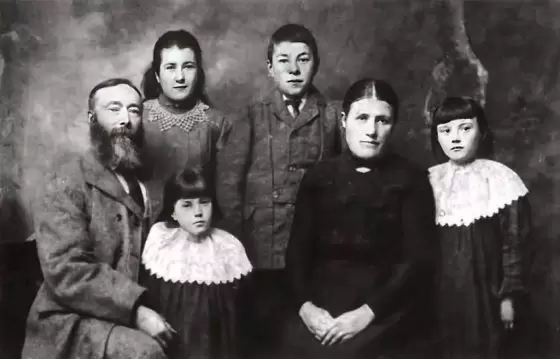
James Thomson and Isabella MacIver
This page contains a story about James Thomson and Isabella MacIver from 15 Tong, Isle of Lewis, Scotland. James Thomson was the son of my great great grandparents Alexander Thomson and Christina MacInnes.
James was a fur trader employed by the Hudson’s Bay Company in Canada, working in the snowy wastelands of Northern Alberta at Fort Chipewyan.
James married Isabella MacIver in Stornoway on 27 April 1877. James’ father, Alexander Thomson and Isabella’s mother Catherine MacIver née Thomson were brother and sister. So James Thomson and Isabella MacIver were first cousins.
In 1927 on the occasion of their Golden Wedding, Isabella told her story to the Stornoway Gazette about how she had decided to go and join her husband in Athabasca, and in doing so became the first Lewis woman in Athabasca.
The story below is told in Isabella’s own words.
Journey to Athabasca in Isabella MacIver’s own words
It is a far cry from Stornoway in the Hebrides to Fort Chipewyan in North Athabasca, 850 miles north west of Winnipeg, even in these days when giant ocean liners cross and recross the Atlantic, and when luxurious trains traverse the great plains of Canada from seaboard to seaboard.
What it was in the year 1880 even in the best steamer then available, and on land by portage and canoe has been described by such writers as General Sir W F Butler in his book The Great Wild West and by numerous others. So that the account that follows may fall short in interest to those others, but I venture to say that it was no light journey to be undertaken by a woman who had hardly ever before left her native island, and who had not a word of English to help her in her great adventure into the unknown.
I was married at Stornoway on the 27 April 1877, my husband having come home on a visit and having to return almost immediately afterwards, so that I was exceedingly anxious to accompany him on his return. It was well known that the country at this time was very unsettled. The Indians had been put into a state of unrest by raids and other troubles, and I was strongly advised not to accompany my husband out there. All those who knew where I was going, and the difficulties I would have to surmount before getting there did all in their power to dissuade me from my desperate undertaking.
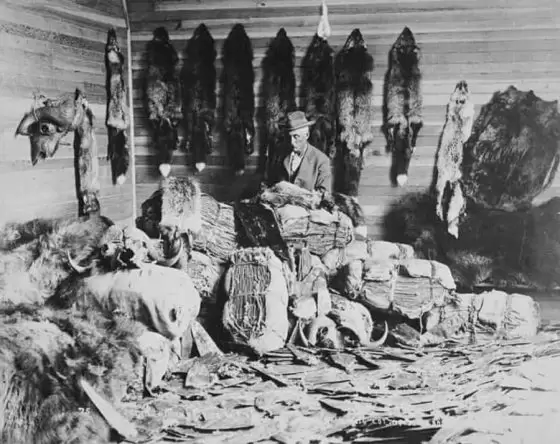
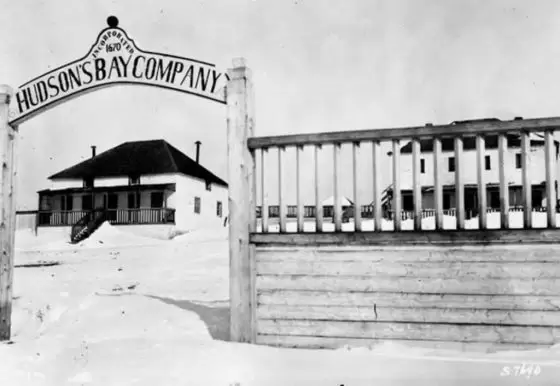
Hudson’s Bay Company
Dr R Miller who was then agent for Hudson’s Bay Company at Stornoway did all he could to prevent my venturing out there, telling me that the cold in Western Canada was most severe in winter, and that the heat in summer would be very trying to one like me. Still, my husband had been out for thirteen years and he was well acquainted with the country. He understood the Indians, their language and their customs so I was not a bit afraid to venture.
However, much against my will, and in no way discouraged, I was forced to forgo my project, and it was three years after before I got away. During these years in my letters to my husband, I pressed him hard to allow me to go out to him as I could not be satisfied unless I was permitted to go. Thus it was that in the month of March 1880 my joy was great on receiving a letter in the following terms:
Dear Madam
Enclosed please find a draft of money for ……. dollars in your favour and a through ticket per the Allen Line from Glasgow to Winnipeg, sent by your husband who has doubtless acquainted you with his intention of bringing you out here.
You will, therefore, lose no time in making your preparations as it is most necessary for you to be here early in May so as to enable you to accompany your husband to the Athabasca District, his new appointment.
Yours Truly
Alexander Christie (Head Clerk), Hudson’s Bay Company, Fort Garry, March 1880
Voyage to Canada
I need hardly say that I was well pleased with the way matters were progressing for my project, and I lost no time in pushing forward my preparations for my journey.
My people redoubled their efforts to dissuade me from going, telling me that I would surely be killed by the Indians, and that my husband would be killed on my account. My mother especially gathered all the wild rumours she could about Indians and such like, but I would listen to no one, my mind was made up and I must go.
In the middle of April I embarked on the SS Clansman at Stornoway on a Monday and arrived at Glasgow on Thursday intending to sail from Glasgow on the following Saturday, but as I had hardly any English and as I did not know any Gaelic speaking people going by that boat, a friend advised me to wait for a week. A boat with a Gaelic speaking captain (Captain Maclean, afterwards Provost of Govan) was due to sail in a week, and my friend spoke to the captain on my account.
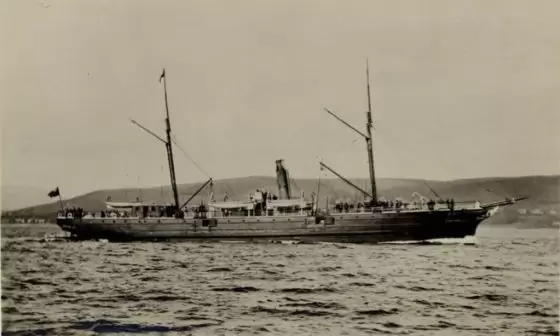
Every afternoon during our voyage the captain sought me out and greatly encouraged me for my venture. Also, before the voyage came to an end at Quebec he sought out among the passengers a Gaelic speaking man of the name of Mackay from Kintail, who was going to Winnipeg to search for work. The captain entrusted me to the man’s care and while he was of great service to me as interpreter, I was at the same time useful to him. He had sent his money to Winnipeg in advance under the impression that his ocean ticket supplied him with everything he needed on the train journey as well as on sea. This, of course, was not the case, but as I was well provided with funds, I was able to see us both through. Our passage across the ocean was good and uneventful, and I was little the worse for the voyage, arriving in Quebec in high spirits and quite satisfied with the first part of my journey.
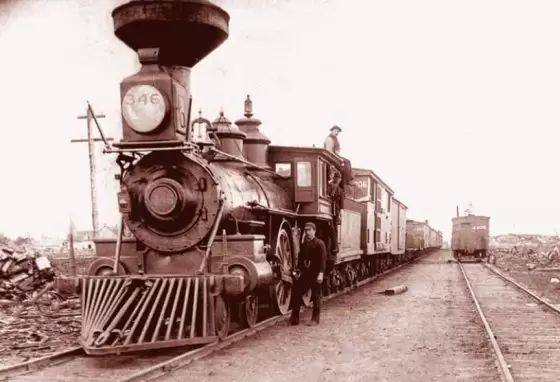
Canadian Pacific Railway
After a short stay at Quebec we entrained for Winnipeg but as some sections of the CPR had not yet been finished on the north side of the Great Lakes, we had to go through the United States. Leaving Quebec in the early morning by the Grand Trunk Railway, our route lay upland through Montreal, Toronto, Hamilton then across into Detroit and through the States of Michigan, Illinois, Missouri, Minnesota and Dakota, never once leaving the train from the time we entrained at Quebec until we arrived in Winnipeg. We even crossed the Great River at Detroit in sections and passed through the cities of Detroit, Chicago, St. Paul’s in Minnesota and Dakota, crossing again into Canada at Pembina in the province of Manitoba, and arriving shortly afterwards at Winnipeg, the first stage of my journey.
On my arrival there, I was disappointed at not finding anyone meeting me. As Fort Garry (the headquarters of the Hudson’s Bay Company) was nearly two miles from the railway station, I got the Kintail man to accompany me to the Company’s office where I called on Mr. Christie and found him most considerate. He told me that my husband was on duty at Fort Alexander and would be back in a day or two. In the meantime he placed me in a hotel close to Fort Garry, and told me to want for nothing as he would arrange everything for my comfort.
My two days stay in the hotel was very pleasant to me until the arrival of my husband from the Lake. With him were his cousin. John McInnes from Tong, and Angus Morrison from Stornoway. The latter was then the oldest pilot on Lake Winnipeg and second in command of the Company’s steamer which was to take us out on Lake Winnipeg to the mouth of the Saskatchewan River.
Our meeting was a most happy one and for a week we had an exceptionally fine time of it, meeting the many Stornoway and Lewis men who came to see me and to enquire about the old country and the folk at home. These were all retired servants of the Hudson’s Bay Company and they told me that there were no Stornoway or Lewis women in Winnipeg at that time, at the same time impressing on me that my adventure was only beginning then; a truth I was soon to find out for myself.
The Steamer ‘Colville’
Thus at the beginning of June 1880 we boarded the steamer ”Colville” of the Hudson’s Bay Company with Angus Morrison second in command and John McInnes, my husband’s cousin, as steward, and began to descend the Red River. The view as we passed down by Kildonan and St. Andrews was magnificent, pretty cottages nestling in sweet glades on each side of the river and a charming countryside stretching away on either side. I was told that the settlers were the descendants of Gaelic speaking people brought out from Sutherlandshire by Lord Selkirk years before.
Certainly their habitations now seemed to be placed in a smiling garden of exceeding richness. In the evening we arrived at Stone Fort, a large square closed in by walls twelve feet high and most strongly built of stone and lime. This enclosure was one of the wonders of the Hudson’s Bay territory, being very imposing and picturesque and to me exceedingly interesting as it was the work of a Stornoway man of the name of Macrae from Melbost.
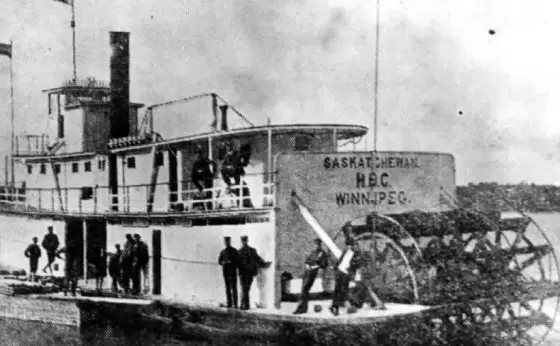
Here at Stone Fort some goods were taken on board for use in the northern depots trade and then we passed down the river to Selkirk where most of the goods for the outlying districts were shipped. Here, at Selkirk, was where it was originally intended for the CPR to cross the Red River but the people of Winnipeg agitated and got the Railway company to strike along the south side of the river for 25 miles and cross at Point Douglas opposite Winnipeg.
Now everything was hustle and bustle loading the “Colville”, working day and night until she was loaded down to a dangerous point according to Angus Morrison, and he knew the River and Lake Winnipeg better than anyone, but at last all was ready and we left Selkirk for the lake, about five miles distant. There was a strong breeze blowing from the west as we got to the mouth of the Red River, and this had the effect of driving the water in a measure to the other end of the Lake. The mouth of the river had not been deepened or dragged, and the steamer often ran aground, making it impossible to get out onto the lake.
We were in a fix and there was nothing for it but to turn back to the river, discharge part of the cargo and try again. After getting rid of some stores, we tried again and were successful getting into the waters of the lake and passing along the north side of the mouth of the Saskatchewan River, but we could only get two miles up the river for we were told that the “Colville” could get no further owing to an obstruction called the Grand Rapids, and that the “Colville” had to return to Selkirk. There was a portage of two miles on the other side of the rapids and all the goods were carried this distance to where a large Company steamer, the North Castle”, was going up the Saskatchewan River.
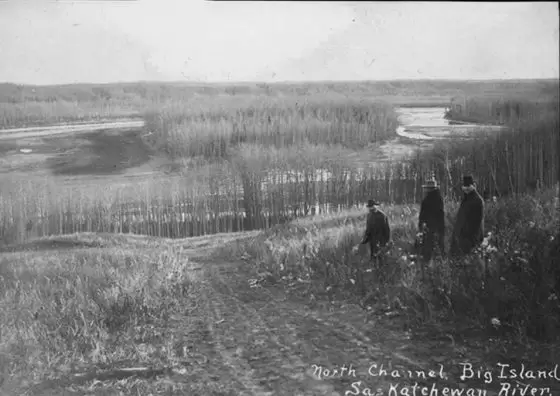
Saskatchewan River
Two days later, we boarded the steamer and began to ascend through Cedar Lake, Moose Lake, Las Passe, Cumberland Fort and Fort-la-Corne above which the Saskatchewan River forks into two branches. We took the North branch and after a while came to Prince Albert where a few small houses could be seen scattered here and there. I was told that there was to be a town here soon, but as yet there was little appearance of that.
It took us a long time to get from the rapids to this place as the river was full of sandbanks and the current was very swift and strong, while huge pine trees some 90 and 100 feet long, fallen from the river banks and floating downstream, made the going quite difficult.
From Prince Albert we came to the great Fort Carlton, the capital of the Northwest Territories, where all the chief factors and traders from the far west McKenzie River District, the Athabasca District and the Île-à-la-Crosse District came every summer to hold council as to how to carry on the work of the following winter. Fort Carlton was a formidable place built of solid logs to a height of twenty feet all round so as to protect the white traders from the savage attacks of the Indians. I was frightened on being shown the marks of the lead balls fired into the fort by the Indians in olden times.
Here, my husband’s chief deputy, Mr R Ross MacFarlane, a Stornoway man, and a man of high distinction in the district, came to see me and complimented me on my courage in venturing so far west. He said that although I had a hard part of my journey still in front of me, he was not a bit afraid that I would not accomplish the rest as well, and as he had had a hand in allowing me to come so far, he was to ask me to undertake a delicate commission for him; no less than to take a cage of six tame hens and a cock to Fort Chipewyan, a distance by the route we would take, I was told, of 1,500 miles. As he was a great patron of my husband and a man of exceedingly high character and kindness, I promised that I would do my best to serve him, and took charge of his consignment of livestock with pleasure.
I was to get a pony and trap for myself and all the requirements for the hens were to be given to me, while carters and boatmen would be given instructions to assist me at all times when necessary. We were here on the borders of civilization and for the rest of our journey there would be no trains or steamers, our only means of travel being carts and York flat boats.
Red River Passage
This, then, was the third stage of my journey and preparations had to be made for a rough trip the like of which I never as much dreamt of Flintlock guns had to be cleaned out, powder and shot, tent poles and pegs, tea and sugar, kettles and pans had to be got ready, axes had to be sharpened and handled and innumerable other things had to be made ready for this part of the trip. As I faced this wild unknown I felt a quiver of uncertainty for the first time, and saw the wisdom of those who tried to dissuade me from entering the Great Wild West, but I was as determined as ever to go on. We crossed the river by a flat boat, and struck due north, our train consisting of ten carts all in charge of a Red River District man, William Sinclair, who knew every part of the route.
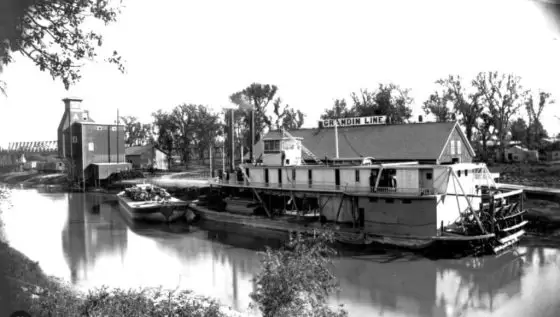
Next morning we were off. The drivers shouted and laughed as they yoked the animals to the carts and fixed the baggage up, for everything bad to be secure and in its proper place. My place was in the rear with my pony and trap and this enabled me to see the country on every side, wild undulating country not very thickly wooded but covered with the richest vegetation. For seven days we trekked through this land of plenty stopping for dinner when a horn was blown by the chief and everyone cooking his own dinner amid a cheerfulness and good fellowship which to me was good to see. There was plenty of game to be shot, wild swan, wild duck, moose, beaver and all sorts so that we were never short of fresh provisions.
After seven days we came to Green Lake and met six boats that were ready to carry us across the lake. We then went down the Green Lake River through Waterhen Lake and River to Île-à-la-Crosse Fort, where we waited for a day or two to give us a much needed rest. We left for the long portage and passed up Île-à-la-Crosse Lake, Deep River, White Lake, Buffalo River and Lake Methie River and Lake, and from there to the long portage called Methie Portage. Here, we were at the highest point of land, and the Methie Portage is a connection between the water that falls into Hudson’s Bay (through the English and Churchill Rivers) and the waters that fall in the Arctic Ocean (through the Clear Water, Athabasca and Mackenzie Rivers).
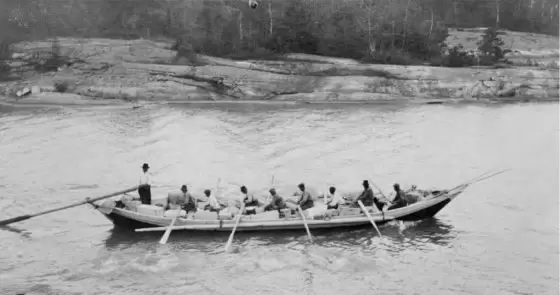
The Long Portage
This portage of twelve or fourteen miles took us a whole day to cross with our horses and carts, and at evening we camped on fine high ground overlooking the Clear Water River. The view was extremely fine as far as Fort McMurray, the background of the mountains and the plains with an occasional patch of woodland forming a lovely picture.
Here again six York boats were ready to take us down to Fort Chipewyan, my destination, and they were in the charge of a middle aged Frenchman who knew his work well. He was called “Guide of the Brigade”.
We left the Long Portage early in the morning, and I was placed with my charge in the guide’s boat. We were going downstream rapidly, gliding smoothly over the surface until the afternoon when there was a call from the guide for all the boats to land, and for all steersmen to come to his boat for a consultation. This order was promptly complied with and there was a long consultation. I saw that something unusual was going to happen for all the boatmen were stripping themselves to the very skins and tying handkerchiefs round their heads.
All the time I could hear ahead a loud dull roar which seemed very terrifying but which, I was told, was caused by falling water. We were in fact to run rapids. The guide told the steersmen that every man had to do his part as he was told, the boats were to keep a certain distance from one another, and if any mishap were to befall a boat, all other boats coming behind were to go to her assistance as those in front could not turn back in the rapid current.
My husband who had passed several times through these rapids, and who understood all the people were saying, told me all this and at the same time told me to fear nothing as the going was perfectly safe. Soon we pushed off from the land, and in a short while the roar of the falls could be heard growing louder and louder as we rapidly approached the ledge. Before coming to the larger falls there were occasional falls which the boats ran down, giving the boatmen a most exciting time as they rowed with all their might on one side of the boat and backed water on the other side thus causing the boat to spin like a top in midstream. All this time the roar of the cascade was terrific and it was impossible to hear a word unless spoken at the top of one’s voice.
The spray from this immense body of water falling 70 or 80 feet down, rose high above the tops of the trees on either side and at first I thought the boats were going to shoot down this awful drop, which of course no-one could do and live. The boats were landed above the big fall and all the cargo was carried by the men across a small neck of land in front, and the boats were dragged ashore and pulled across a small strip of land into the water below the great falls, and so into smoother water behind.
Fort McMurray
It was a long time before I forgot the look and the roar of that giant fall or the majestic sight it presented to me when I viewed it for the first time. On our way down to Fort McMurray we passed as many as five of these rapids and at each one the cargo was taken out of the boats and carried across by the men.
It was a wonderful experience and a delightful sensation to me as the empty boats ran down the rapids towards Fort McMurray where the Clear River joins the Athabasca River. I was told that I was the first Scottish woman, and I am certain that I was the first Lewis woman that got down these rivers, for although at all these trading forts and stations Lewis men were everywhere in evidence, no Lewis women were to be met anywhere.
We left Fort McMurray after landing supplies for next winter, passed down the Athabasca River to the lake of that name, crossed the end of Lake Athabasca and arrived the first week of September at my destination, Fort Chipewyan in the Northwest Territory and established by that famous traveller, Sir Alexander McKenzie, a Stornoway man. The Deputy Governor Mr R Ross MacFarlane, who had arrived by canoe before us, came to see me and congratulated me on my success in coming through so many hardships, and bringing a cargo of hens safe and sound to Fort Chipewyan.
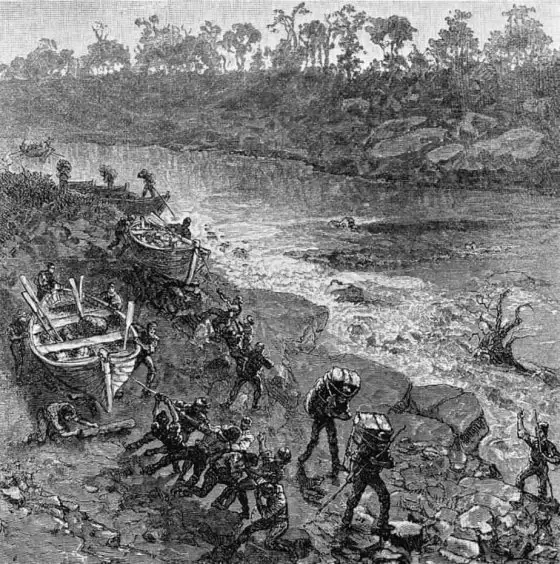
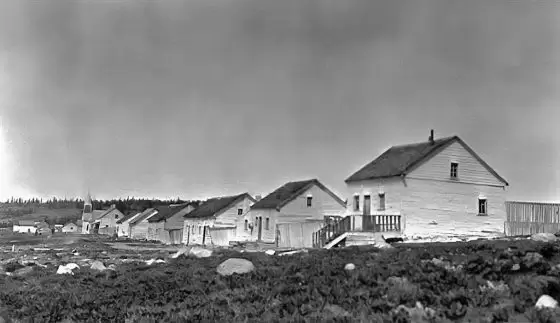
Fort Chipewyan
These sketchy notes are now at an end. At the time these things happened, no notes were taken nor was it ever intended to write this account, but perhaps to many, the route taken and the hardships of travel endured by the early settlers may be of interest. To me, as I look back on those eventful days, many things come back, but nothing so much as the kindly consideration that was given me, a lonely woman, by Indians, Frenchmen and everyone else I came in contact with. My health was excellent and I was looking forward to a very happy home life in the plains of Athabasca. In conclusion, may I add my humble thanks to my countrymen who went before me into the Unknown, for I know well that when the history of these great and valuable parts of Canada comes to be written, it will be found that a very prominent part in the pioneering work of the Great Northwest has been taken by Lewis men.

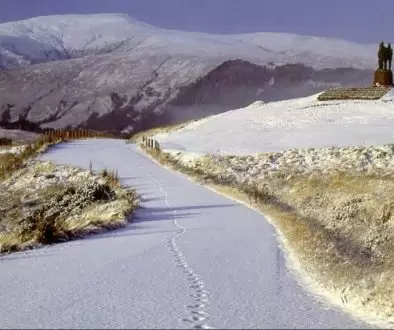
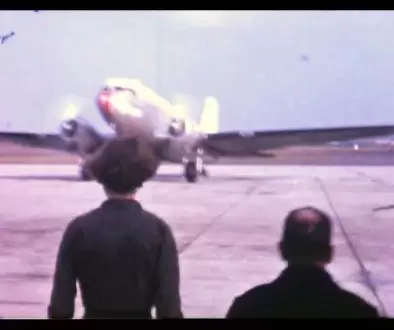
15th October 2024 @ 12:13
Ian. I have read Isabella MacIver Thomson’s account with great interest — it is incredibly well-written and captivating. We’d love to make her story accessible to a wider audience and discuss our plans with you. Could we exchange email addresses to talk further? Looking forward to hearing from you.
15th October 2024 @ 19:27
Claudia,
I would love the story to have a wider audience. My father, Donald Thomson, was born in Tong in 1910 and would have grown up with this story as a child as James Thomson was his great uncle. I would point out that Isabella MacIver wrote the story in her own words and it was published in the Stornoway Gazette in 1927. All I have done is to republish Isabella’s story and add an introduction and add illustrations. You might also be interested to read about an interesting allegatation that James Thomson had fathered a child with a native Chipewyan woman. I wrote an article about this entitled “James Thomson and his native wife”.
I will email you.
Ian
20th February 2023 @ 21:25
Ian. This is a truly remarkable account of a very courageous woman who obviously loved her husband true. The notes made and the photos you have added make this a compulsive and really interesting read. I visited and lectured in Winnipeg ( I think in May) and it was well below freezing. It is good thing she journeyed in September! I can not imagine how she and husband survived winters 2000 miles NW of Winnipeg…. Must be good Lewis Thomson blood! Thank you for sharing this with us.
21st February 2023 @ 09:35
Thanks, Peter. Well, I hope you enjoy Part 2 as well. It is all about the native wife he had in Fort Chip, which is probably why Isabella was so keen to go out to Canada.
Ian